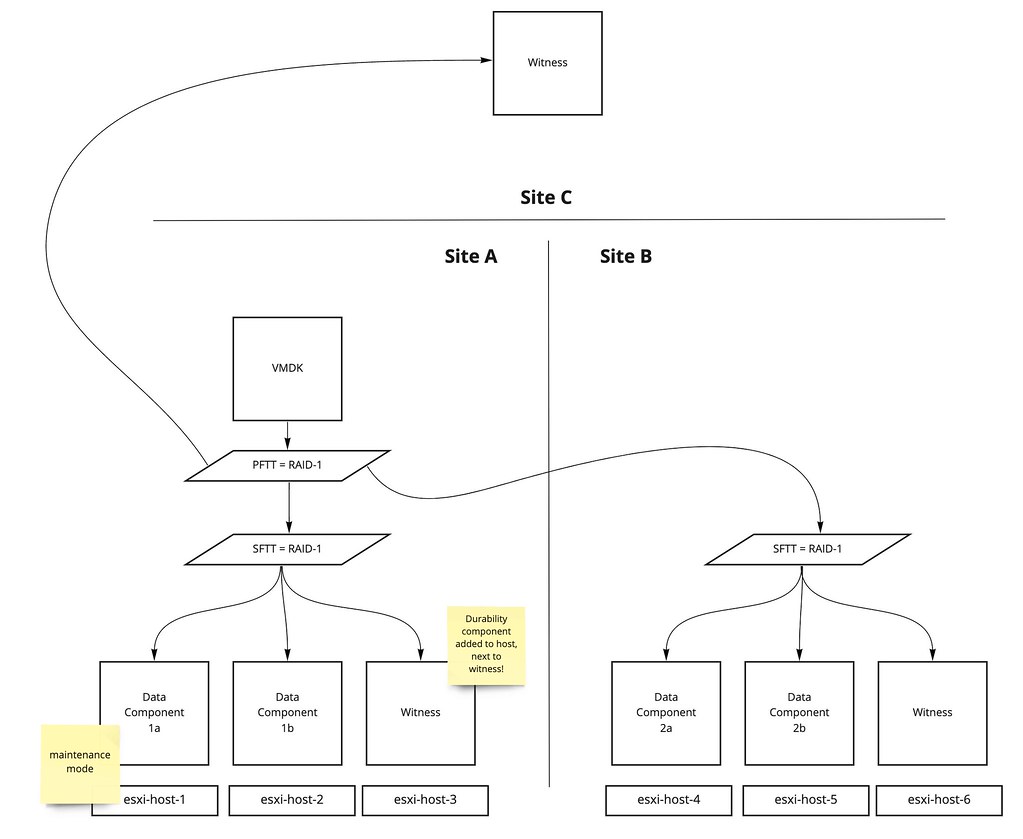Last week I had a question about how vSAN Enhanced Durability works when you have a limited number of hosts. In this case, the customer had a 3+3+1 stretched cluster configuration, and they wondered what would happen when they would place a host into maintenance mode. Although I was pretty sure I knew what would happen, I figured I would test it in the lab anyway. Let’s start with a high-level diagram of what the environment looks like. Note I use a single VM as an example, just to keep the scenario easy to follow.

In the diagram, we see a virtual disk that is configured to be stretched across locations, and protected by RAID-1 within each location. As a result, you will have two RAID-1 trees each with two components and a witness, and of course, you would have a witness component in the witness location. Now the question is, what happens when you place esxi-host-1 into maintenance mode? In this scenario, vSAN Enhanced Durability will want to create a “durability component”. This durability component is used to commit all new write IO to. This will allow vSAN to resync fast after maintenance mode, and enhances durability as we would still have 2 copies of the (new) data.
However, in the scenario above we only have 3 hosts per location. The question then is, where is this delta component created then? As normally with maintenance mode you would need a 4th host to move data to. Well, it is simple, in this case, what vSAN does is it creates a “durability component” on the host where the witness resides, within the location of course. Let me show you in a diagram, as that makes it clear instantly.

By adding the Durability component next to the witness on esxi-host-3, vSAN enhances durability even in this stretched cluster situation, as it provides a local additional copy of new writes. Now, of course I tested this in my lab. So for those who prefer to see a demo, check out the youtube video below.
